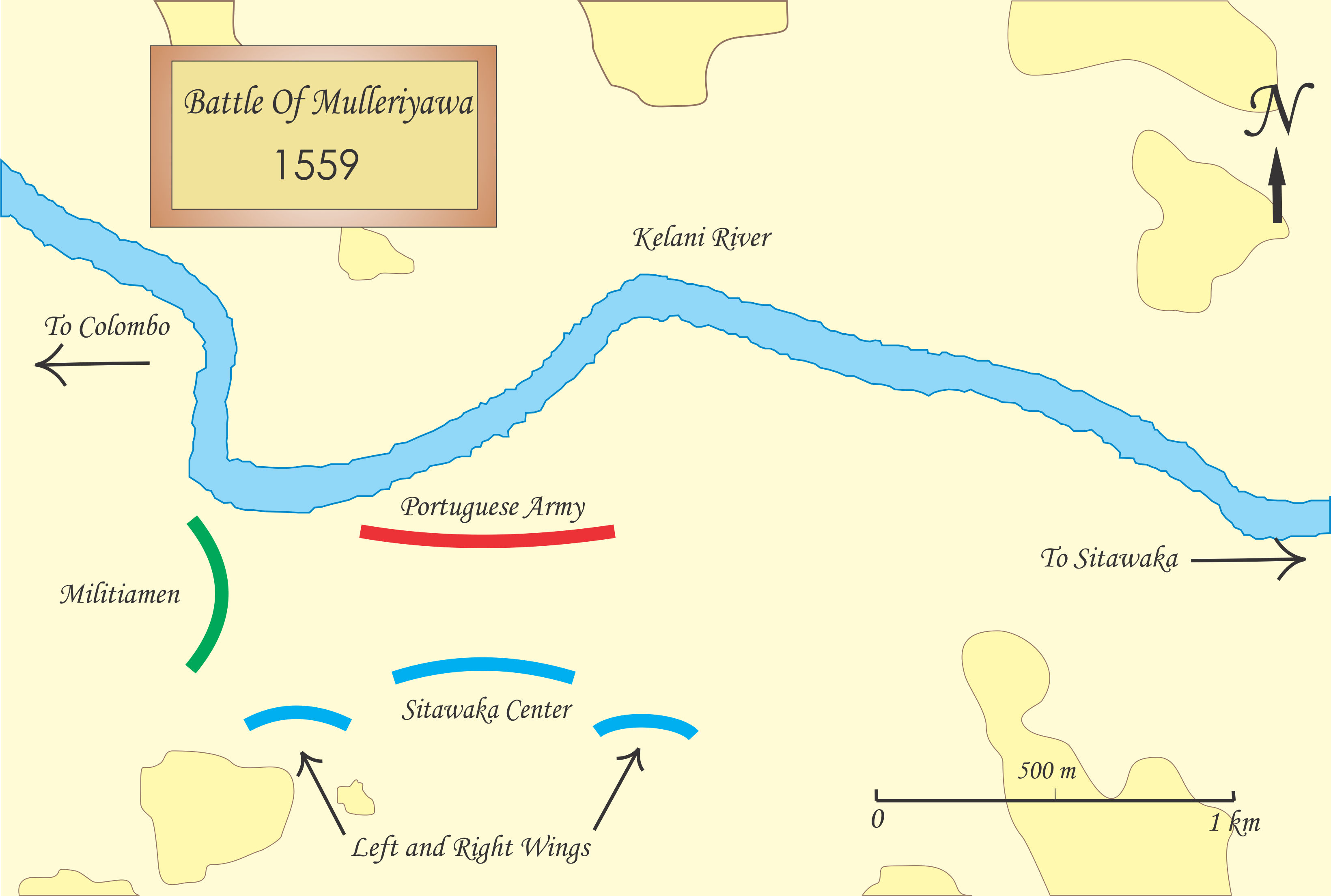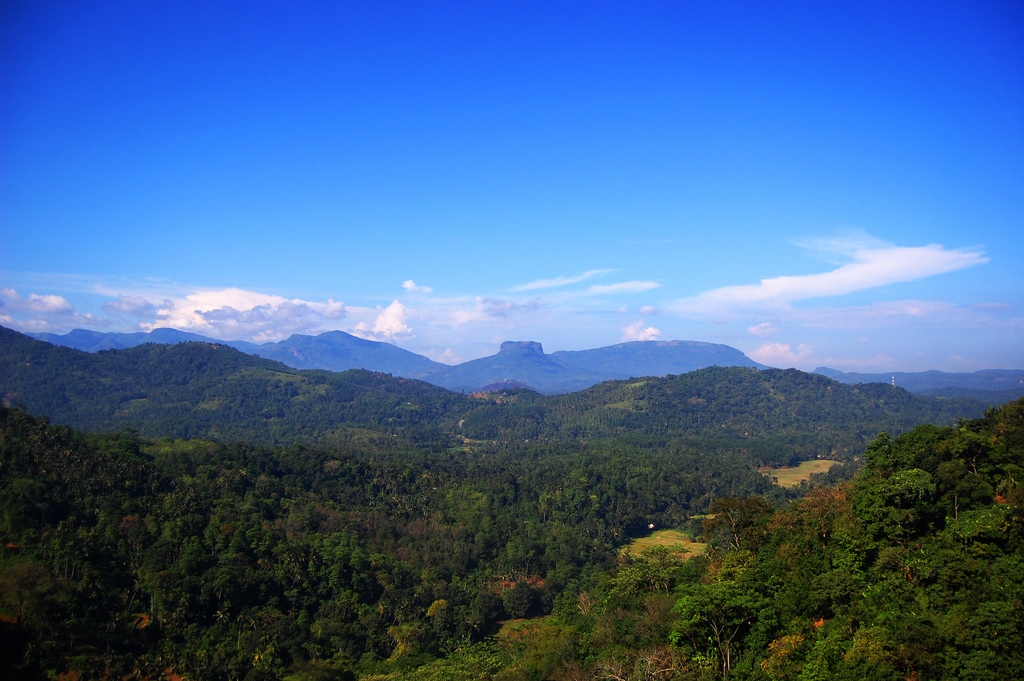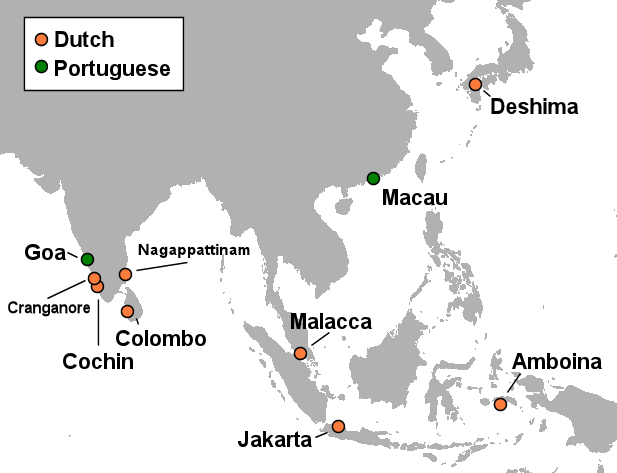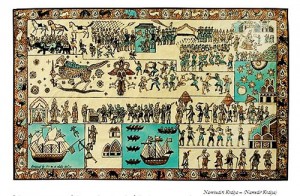|
Rajasinha I Of Sitawaka
Rajasinghe I also known as the lion of Sitawaka ( Sinhala:පළමුවන රාජසිංහ) was a king of Sitawaka, known for his patriotism and fight against the Portuguese invasion of Sri Lanka. Born as Tikiri Bandara to King Mayadunne, he received the name "Rajasinha" (meaning ''the Lion King'') after the fierce Battle of Mulleriyawa. Ascent to throne Generally, the recorded period of Rajasinha's reign starts from 1581 to 1592. However, as per Portuguese navigator De Queros, Mayadunne had turned the kingdom over to Rajasinha in 1578 before his death in 1581. There are various narratives surrounding Rajasinha's role in his father's death. As per Thibbotuwawe Buddharakhitha's Mahawamsa(Chapter 4) written during the reign of Kirti Sri Rajasinha of Kandy, Rajasinha killed him. Minor Rajawaliya wrote that his patricide was considered an irreversible anantharya karma by Buddhist monks, so conflicts arose between him and the monks. As a result, he followed an anti- ... [...More Info...] [...Related Items...] OR: [Wikipedia] [Google] [Baidu] |
Kingdom Of Sitawaka
The kingdom of Sitawaka (, ) was a kingdom located in south-central Sri Lanka. It emerged from the division of the kingdom of Kotte following the Wijayaba Kollaya, Spoiling of Vijayabahu in 1521. Over the course of the next seventy years it came to dominate much of the island. Sitawaka also offered fierce resistance to the Portuguese Empire, Portuguese, who had arrived on the island in 1505. Despite its military successes, Sitawaka remained unstable, having to contend with repeated uprisings in its restive Kandyan territories, as well as a wide-ranging and often devastating Sinhalese–Portuguese War, conflict with the Portuguese. Sitawaka disintegrated soon after the death of its last king Rajasinha I of Sitawaka, Rajasimha I in 1593. History Foundation The kingdom of Kotte had been the major power in western Sri Lanka since its foundation in the early 15th century; under Parâkramabâhu VI of Sri Lanka, Parakaramabahu VI, the polity has been the last to unite the entirety of ... [...More Info...] [...Related Items...] OR: [Wikipedia] [Google] [Baidu] |
Dutch Empire
The Dutch colonial empire () comprised overseas territories and trading posts under some form of Dutch control from the early 17th to late 20th centuries, including those initially administered by Dutch chartered companies—primarily the Dutch East India Company (1602–1799) and Dutch West India Company (1621–1792)—and subsequently governed by the Dutch Republic (1581–1795) and modern Kingdom of the Netherlands (1815–1975). Following the ''de facto'' independence of the Dutch Republic from the Spanish Empire in the late 16th century, various trading companies known as '' voorcompagnie'' led maritime expeditions overseas in search of commercial opportunities. By 1600, Dutch traders and mariners had penetrated the lucrative Asian spice trade but lacked the capital or manpower to secure or expand their ventures; this prompted the States General in 1602 to consolidate several trading enterprises into the semi-state-owned Dutch East India Company (, VOC), which was g ... [...More Info...] [...Related Items...] OR: [Wikipedia] [Google] [Baidu] |
Hiti Imbule Bodiraja Perumal
Hiti, or Hiti-rau-mea, is a small atoll of the Tuamotu Archipelago in French Polynesia. It is located 19 km southwest of Makemo Atoll. Hiti Atoll is oval in shape. It measures 9 km in length with a maximum width of 6 km. There are some narrow islands on the northern side of its reef with a total land area of about 3 km2. The southern part of the reef is broader but has no islands. Hiti's lagoon is not connected to the ocean by a pass. The small group formed by Hiti, Tepoto Sud and Tuanake is also known as the "Raevski Atolls". The Tuamotu reed warbler and the Polynesian ground dove are found in this area. Hiti Atoll is permanently uninhabited. History The first recorded European to arrive to Hiti Atoll was Russian oceanic explorer Fabian Gottlieb von Bellingshausen in 1820. Administration Hiti belongs to the commune of Makemo, which consists of the atolls of Makemo, Haraiki, Marutea Nord, Katiu, Tuanake, Hiti, Tepoto Sud, Raroia, Takume, Taenga and Nihiru ... [...More Info...] [...Related Items...] OR: [Wikipedia] [Google] [Baidu] |
Maggona Arachchi
Maggona Arachchi ( also Maggonage, Maggona ge) is a Sinhalese speaking Khandayat ethnic group of Sri Lanka. The House of Kaikesi Irugal migrated from Odisha in the 13th Century, claiming lineage to the Yadava royalty in the Kingdom of Kalinga in Eastern India. They are probably related to Khandayat people. History Maggona Arachchis are former Yadava people who lived in ancient Kalinga. They were a warrior caste known as Khandayat. After the Ashoka Empire conquered Kalinga, Yadava's Khandayats embraced Buddhism. They arrived in the time of the Kingdom of Gampola from Odisha. They came with the Tamil Nadu Madurai - Kanchipuram Alagakkonara Family - අලගක්කෝනාර පවුල to fight the Vijayanagara Empire and Jaffna as mentioned in Alakeshvara Yuddaya. Once Minister Nissanka Alagakkonara got enough power at Gampola royal court, he influenced the royal court to arrange the southern fort to protect the Kotte Fort at Maggona and appointed Maggona Arach ... [...More Info...] [...Related Items...] OR: [Wikipedia] [Google] [Baidu] |
Sitawaka Fort
Sitawaka fort (; ), was built by the Sitawaka kingdom in Avissawella, Sri Lanka. It was adjoined with the palace of king Rajasinha I of Sitawaka, Rajasinha I. The fort had been mounted with cannon on the river bank. Sitawaka fort is destroyed along with palace of king and only the ruins can be seen today by the side of the Avissawella – Panawala road. References {{Forts and fortresses of the Portuguese empire, state=collapsed Buildings and structures in Colombo District Forts in Western Province, Sri Lanka Kingdom of Sitawaka Archaeological protected monuments in Kegalle District ... [...More Info...] [...Related Items...] OR: [Wikipedia] [Google] [Baidu] |
Uva Province
The Uva Province (, , ) is one of the nine provinces of Sri Lanka. The province has an area of 8,500 km2 and a population of 1,266,463, making it the 2nd least populated province. The provincial capital is Badulla. Uva is bordered by the Eastern, Southern, Sabaragamuwa, and Central provinces. It is home to several tourist attractions, waterfalls and two national parks: Yala National Park and Gal Oya National Park. History Uva's provincial history records an 1818 uprising (also known as the Third Kandyan War) against the British colonial government which had been controlling the formally independent Udarata (Sinhalese: ''Up-Country''), of which Uva was a province. The uprising was led by Keppetipola Disawe, a rebel leader celebrated by the Sinhalese even today, who was sent initially by the British government to stop the uprising. The rebels managed to capture Matale and Kandy before Keppetipola fell ill and was captured and beheaded by the British. His skull was abno ... [...More Info...] [...Related Items...] OR: [Wikipedia] [Google] [Baidu] |
Kingdom Of Kotte
The Kingdom of Kotte (, ), named after its capital, Kotte, was a Sinhalese kingdom that flourished in Sri Lanka during the 15th century. Founded by Parakramabahu VI with the help of the Ming, the Kingdom managed to conquer the Jaffna kingdom and the Vanni principalities, and bring the country under one flag. It led to a punitive invasion against the Vijayanagar dynasty and captured a port. The Kotte Kingdom was largely dissolved during the Sinhalese-Portuguese War, as it faced attacks from rival Sinhalese kingdoms, the Kingdom of Sitawaka and Kingdom of Kandy. Dom João Dharmapala handed it over to the Portuguese, thus leading to the formation of Portuguese Ceylon. Kanakasooriya Cinkaiariyan and his two son's also returned from Madurai with mercenaries and managed to conquer Jaffna.Kunarasa K, ''The Jaffna Dynasty'' p.68-72Nadarajan V, ''History of Ceylon Tamils'' p.81 The remainder was annexed into Sitawaka and Kandy. Etymology The term ''Kotte'' is said to have ... [...More Info...] [...Related Items...] OR: [Wikipedia] [Google] [Baidu] |
Mayadunne Of Sitawaka
Mayadunne () was the founder and ruler of Sitawaka from 1521 to 1581. A fierce opponent of the Portuguese, he devoted his life to oust his father and brother Bhuvanekabahu VII, the king of Kotte in order to preserve the independence of the island, being undermined by Portuguese intrigue. He constantly invaded the territory of Bhuvanekabahu of Kotte. Early life Mayadunne was born in 1501 in Kotte of the Kingdom of Kotte. He was the son of Vijayabahu VII who reigned as king from 1509 to 1521. Mayadunne was the youngest child born to Vijaya Bahu VII and his main Queen. He had two full brothers, Bhuvanekabahu and Raigama Bandara. Bhuvanekabahu who was also king of Kotte from 1521 to 1551. Wijayaba Kollaya In 1521 together with his two full brothers Bhuvanekabahu and Raigama Bandara, who were born to the main queen of Vijaya Bahu VII, he revolted against his father, suspecting him of planning to pass the throne of Kotte to one of Vijaya Bahu VII's other queen's sons ( ... [...More Info...] [...Related Items...] OR: [Wikipedia] [Google] [Baidu] |
Veediya Bandara
Veediya Bandara (Sinhala: වීදිය බණ්ඩාර) was the commander-in-chief of the Kingdom of Kotte, Sri Lanka, during the reign of Bhuvanaikabahu VII of Kotte (1521–1551). He was a gifted warrior and widely regarded as one of the greatest generals of Sri Lankan history. Well known for his prowess of warfare, he was the central figure of the Kotte army, in a series of relentless wars against King Mayadunne of Sitawaka and occasionally, against the Portuguese. Being impetuous by nature, he got himself involved in many scandals, including the murder of his wife, Samudra Deviya (සමුද්ර දේවි), the daughter of his king. Background At the time of his birth and during his youth in early 16th century, several parties were struggling for the supremacy of the island of Sri Lanka. Chief among them were King Bhuvanekabahu VII, his younger brother Mayadunne, the ruler of Sithawaka and the Portuguese, who were starting to establish themselves along the we ... [...More Info...] [...Related Items...] OR: [Wikipedia] [Google] [Baidu] |
Sinhalese People
The Sinhalese people (), also known as the Sinhalese or Sinhala people, are an Indo-Aryan peoples, Indo-Aryan ethno-linguistic group native to the island of Sri Lanka. They are the largest ethnic group in Sri Lanka, constituting about 75% of the Sri Lankan population and number more than 15.2 million. The Sinhalese people speak Sinhala language, Sinhala, an insular Indo-Aryan languages, Indo-Aryan language. Sinhalese people are predominantly Theravada Buddhists, although a significant minority of Sinhalese follow branches of Christianity in Sri Lanka, Christianity and Religion in Sri Lanka, other religions. Since 1815, Sinhalese people were broadly divided into two subgroups: the up-country Sinhalese of the Central province, Sri Lanka, central mountainous regions, and the low-country Sinhalese of the coastal regions. Although both groups speak the same language, they are distinguished as they observe different cultural customs. According to the ''Mahavamsa'', a Pali chronicle ... [...More Info...] [...Related Items...] OR: [Wikipedia] [Google] [Baidu] |




